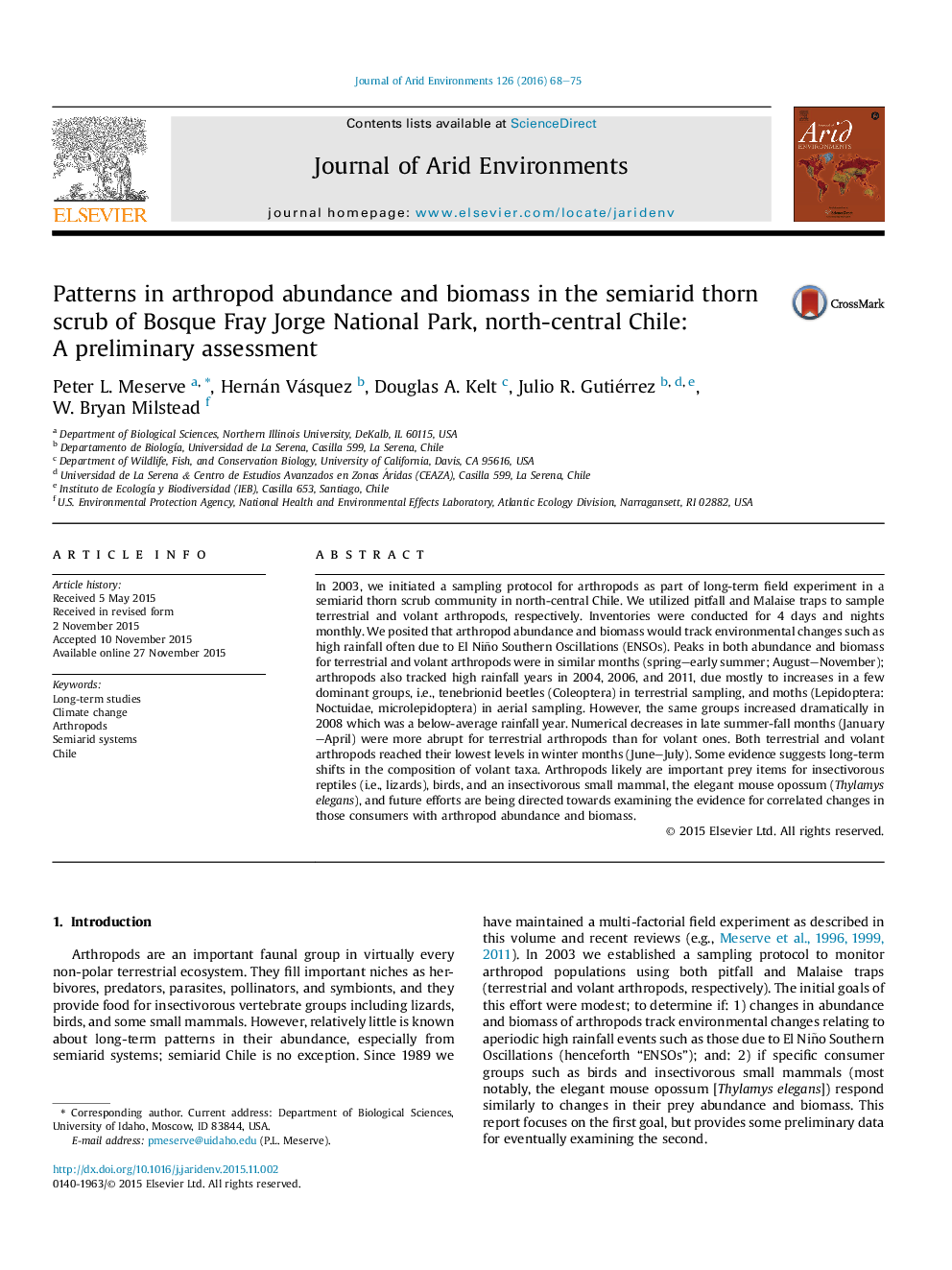| کد مقاله | کد نشریه | سال انتشار | مقاله انگلیسی | نسخه تمام متن |
|---|---|---|---|---|
| 4392762 | 1618233 | 2016 | 8 صفحه PDF | دانلود رایگان |

• We monitored arthropods in a north-central semiarid community in Chile.
• Arthropods exhibited seasonality and volant taxa may be undergoing long-term changes.
• Tenebrionid beetles and moths made the majority of arthropods in number and biomass.
• Arthropod increases were generally tied to rainfall, but not exclusively so.
• Changes in arthropod predators may be tied to changes in their principal food.
In 2003, we initiated a sampling protocol for arthropods as part of long-term field experiment in a semiarid thorn scrub community in north-central Chile. We utilized pitfall and Malaise traps to sample terrestrial and volant arthropods, respectively. Inventories were conducted for 4 days and nights monthly. We posited that arthropod abundance and biomass would track environmental changes such as high rainfall often due to El Niño Southern Oscillations (ENSOs). Peaks in both abundance and biomass for terrestrial and volant arthropods were in similar months (spring–early summer; August–November); arthropods also tracked high rainfall years in 2004, 2006, and 2011, due mostly to increases in a few dominant groups, i.e., tenebrionid beetles (Coleoptera) in terrestrial sampling, and moths (Lepidoptera: Noctuidae, microlepidoptera) in aerial sampling. However, the same groups increased dramatically in 2008 which was a below-average rainfall year. Numerical decreases in late summer-fall months (January–April) were more abrupt for terrestrial arthropods than for volant ones. Both terrestrial and volant arthropods reached their lowest levels in winter months (June–July). Some evidence suggests long-term shifts in the composition of volant taxa. Arthropods likely are important prey items for insectivorous reptiles (i.e., lizards), birds, and an insectivorous small mammal, the elegant mouse opossum (Thylamys elegans), and future efforts are being directed towards examining the evidence for correlated changes in those consumers with arthropod abundance and biomass.
Journal: Journal of Arid Environments - Volume 126, March 2016, Pages 68–75